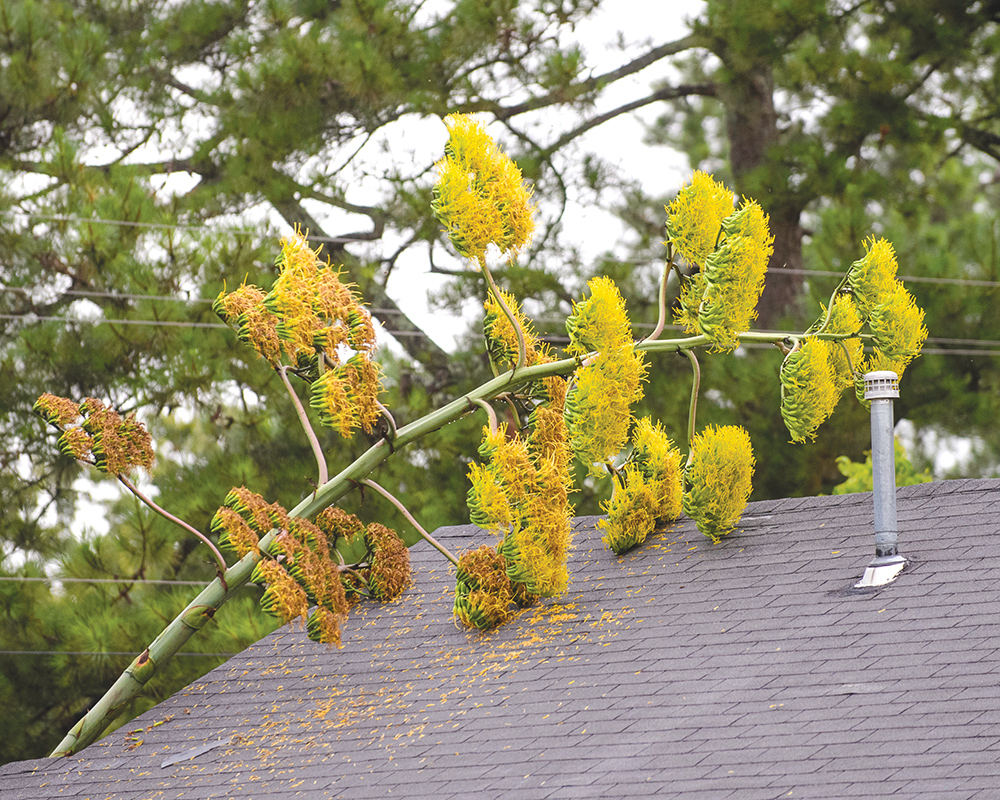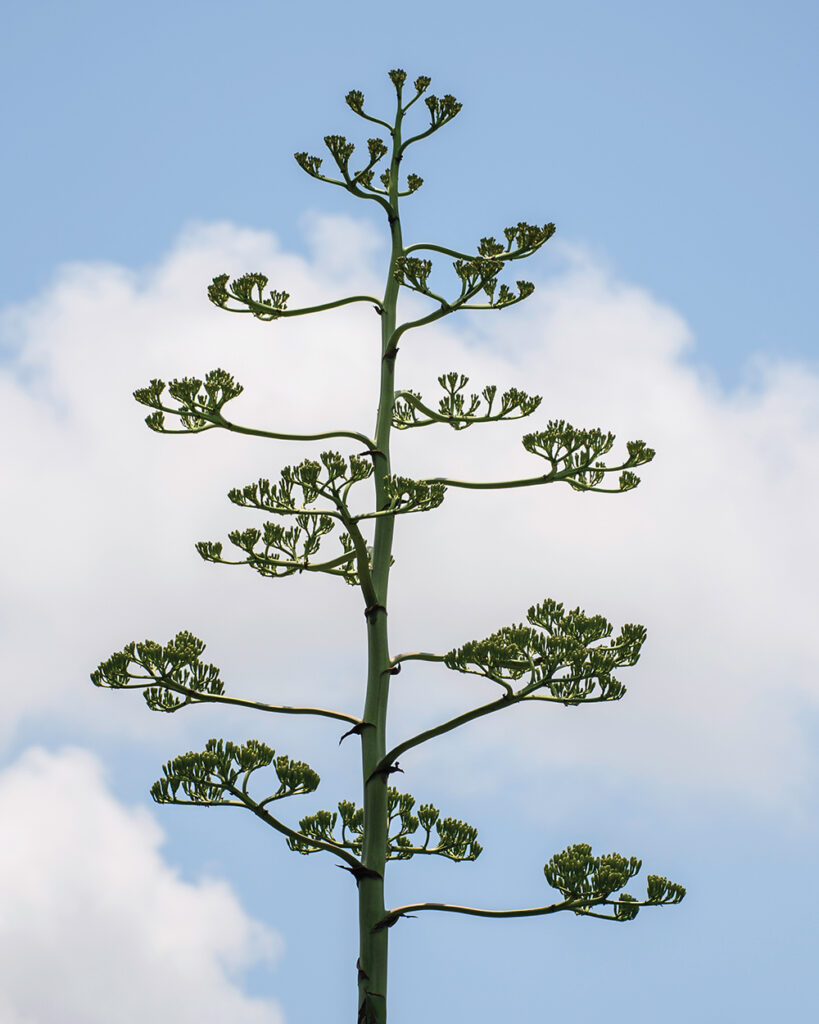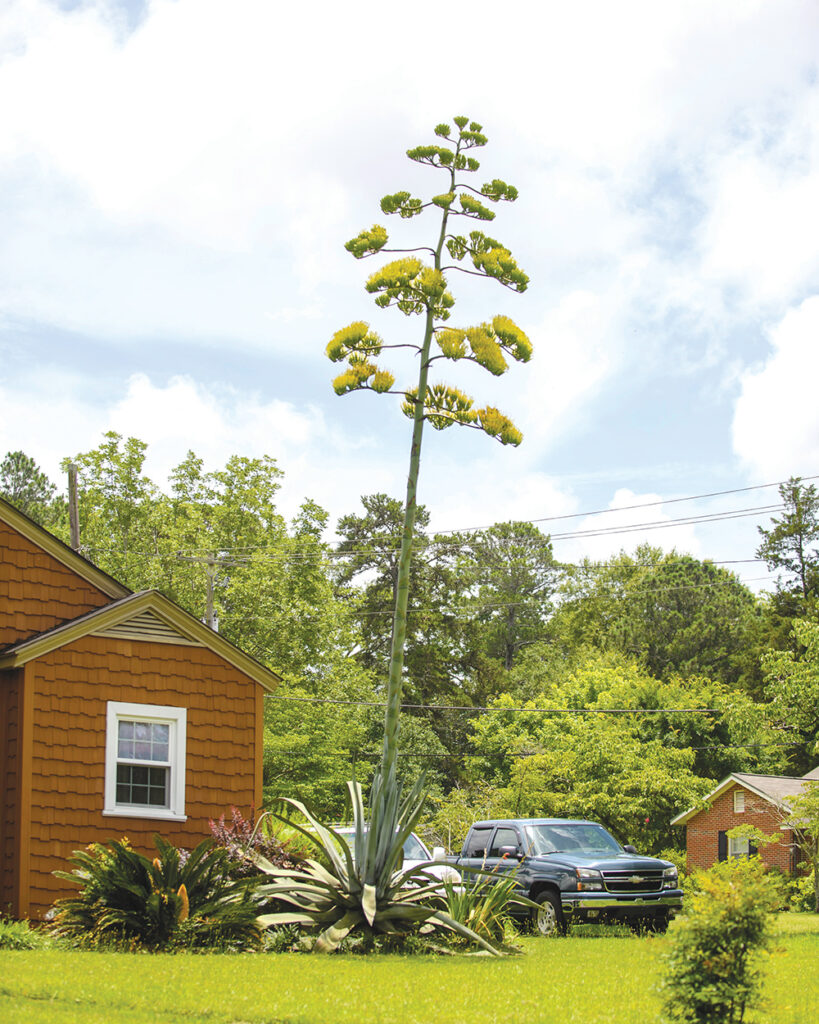BY ABBEY CRANK
FOR THE OPELIKA OBSERVER
Imagine: It’s 2001. You planted an agave plant without knowing it would grow to be over 20 feet two decades later. All of a sudden it begins to bloom and over the next two months, it develops green, finger-like buds, that eventually begin to open showing vibrant yellow flowers.
Before all the buds have fully opened, the asparagus-like plant crashes, ending its lifecycle. This is Christopher Ware’s reality.
The agave americana, also known as the century plant, is not your average find in Alabama, let alone Opelika; Usually, these plants are found in deserts or tropical environments: Arizona, California, Hawaii, Louisiana and Texas.
According to The University of Texas at Austin, the bottom half of the plant ranges from 6 to 12 feet. Once the stalk blooms, the plant can range from 12 to 25 feet. A healthy americana can last for at least 10 years. If handled correctly, it can last an average of 30 years.
Ware planted it at his father’s house on the corner of Fifth Avenue and Third Street.
Since May 10, Opelika residents flocked to see the first and final sprout of this plant’s existence.
Cars purposefully drove by daily to keep up with the progress, and Ware made sure to document its journey on Facebook.
This past Friday, the beloved americana could not withstand the strong winds and heavy downpour of a summer thunderstorn. The rain died down, and Ware was left with the 20-foot spurt fallen on his father’s roof.
As much as Ware wanted to save the plant, he couldn’t.
“You can’t just go and handle it because it has juices that will hospitalize you,” Ware wrote on Facebook. “The juices contain raphides which are sharp crystals that can cause severe irritation for up to a year.”
Because the plant has already bloomed, it is not strong enough to be rerooted; the Ware family is now waiting for the juices to settle and say one last goodbye.



